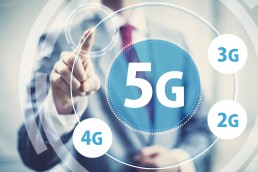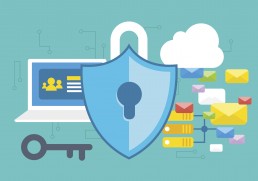Delivering 'Contextual and Value-Centric Insurance'
Traditional business models of insurance carriers and intermediaries (agents/brokers) across the globe are challenged due to the change in expectations of customers and partners, technology innovations, regulatory demands, and sociopolitical and economic disruptions.
The advent of semi-autonomous or autonomous vehicles, connected vehicles and homes, sharing and on-demand economies, and peer-to-peer insurance models are adding a new dimension to the competitive landscape.
To tackle the challenges and stay relevant in an ever-evolving market, many insurance organizations are embarking on a transformation journey. IDC believes that to succeed in their initiatives, the insurance technology buyers need to identify where and how to craft a winning Digital Transformation (DX) business strategy and execution roadmap. The technology suppliers that serve the industry needs to have a contextualized understanding of how and where key software, hardware, and IT services enable DX business outcomes and success. Keeping this in mind, IDC has built a DX use case taxonomy research that outlines the digital mission of Contextual and Value-Centric Insurance, strategic priorities that support the mission, programs that help meet priorities, and use cases that help realize the overall goals and objectives of the organization.
The digital mission of ‘contextual and value-centric insurance’ is to create simple, transparent, and unique experiences that are rooted on the principles of proactive risk management and secure, seamless and contextual engagements across the customer journey. To achieve this and align to the changing expectations of customers, partners, and markets, the industry needs to transform from a traditional, product-centric mindset to a customer-centric mindset enabled by digital technologies and the power of data and analytics.
This digital mission of ‘contextual and value-centric insurance’ is supported by 4 strategic priorities:
- Omni-Experience Engagement that enables customer connect through multiple channels and deliver personalized products, services and communication through customer’s channel(s) of choice in a frictionless manner.
- Usage and Value-Oriented Offerings that involves the launch of usage-based insurance (UBI) products powered by sensor-based technologies and to bundle them with value-added offerings in partnership with other industries. The priority is to meet the customer expectation to receive true value for the premiums they pay, above and beyond the traditional products and services delivered. It also involves investing in evidence-based loss prevention powered by sensor based technologies in different lines of business for the company’s benefit as well as improving customer retention and brand loyalty.
- Speed, Scale and Agility that addresses the need for insurance carriers and intermediaries to transform digitally to respond quickly to market changes, but achieving this in a controlled, secure, and agile fashion. It deals with modernization or replacement of their core functions such as policy admin, claims, and underwriting; modernizing infrastructure systems; going paperless, enabling connected workforce and automating their channel operations.
- Building Cognitive Competencies which focuses on leveraging a combination of data from internal and external data sources to build a complete picture of customers and risks to mitigate risks and handle fraud in the digital world. The insights drawn from the data is vital to respond better to incidents and meet the regulatory requirements more accurately and effectively. The use of analytics and cognitive technologies will enable to price risks in real time, more accurately as well as help build new revenue streams by sharing data with other insurers or non-insurance industries.
These strategic priorities, and the programs that help meet these priorities and the use cases (individually funded projects) are detailed in the Worldwide Digital Transformation Use Case Taxonomy, 2017: Insurance.This study forms the basis of IDC’s insurance DX research in the coming years.
We recently published a research titled Connected Cars: An Exciting Convergence Point for Insurers and Automakers to Monetize Data to Deliver Great Customer Experience that aligns with the strategic priorities of ‘Omni-Experience Engagement’ and ‘Usage and Value-Oriented Offerings’.
We will be continuing the discussions on DX priorities of the banking and the insurance industry at our upcoming IDC Financial Services Forum on 28th September, 2017 in London.
5G May Be Mobile’s Shiny New Thing, but There is Plenty of Innovation to Come from 4G Networks
Excitement about 5G is starting to dominate the agenda in the mobile industry, as we near the first phase of 5G standardisation. But it’s important not to lose sight of how much potential remains in 4G mobile networks, for meeting the current and future demands of both consumers and businesses.
There are three main areas in which 5G promises benefits:
- Faster data rates and higher capacity
- Expansion of the internet of things (IoT)
- Lower latency
Operators do not need to wait for 5G to take these things forward. In all three areas, operators can deliver major improvements immediately, by investing in the development of their 4G networks.
Faster data rates and high capacity in 4G networks
Today in London’s Wembley Stadium, EE, Sony and Qualcomm jointly hosted an event demonstrating that we do not need to wait for 5G, to get gigabit speeds on mobile. In fact, we do not need to wait at all. By combining three 4G technology upgrades (carrier aggregation, 4 x 4 MIMO and 256 QAM), EE showed peak download data rates around 750Mbit/s on its live commercial network. In lab conditions, using the same technologies, download rates of almost 1Gbit/s have been achieved. Earlier this year, the Australian operator Telstra demonstrated download speeds in the 1Gbit/s range, but in that case the access device was a router. EE’s Wembley demo used a smartphone as the access device (Sony’s Xperia XZ Premium).
Given sufficient spectrum, there is still more scope to increase the data rates that 4G networks can achieve using these upgrade technologies, and it’s likely that in the next few years we will see peak download rates well in excess of 1Gbit/s well before the advent of 5G.
IoT expansion in 4G networks
Operators can expand the scale and scope of IoT on their 4G networks by applying specialized upgrades: NB-IoT (narrowband IoT) and LTE-M (LTE-machine). By reducing the power consumption and signaling activity of connected devices, these upgrades can enable 4G networks to support connection densities in the range of 50,000-60,000 devices per cell, to improve coverage in enclosed and underground locations such as water mains, and to connect devices such as sensors that can operate for years on a single battery charge.
Vodafone brought the first commercial NB-IoT application to market, a smart metering solution for the Spanish water utility Aguas de Valencia. Other large European operators are embracing NB-IoT too, notably Deutsche Telekom, which announced nationwide NB-IoT coverage in The Netherlands at the end of May 2017, and its first commercial NB-IoT services packages in Germany in June 2017. LTE-M, has mainly been adopted outside Europe, but a major exception emerged in February 2017 when Orange announced its plan to roll out LTE-M on its 4G networks in Belgium and Spain, and eventually in other operating markets too.
Low latency in 4G networks
5G networks promise latency below 10ms, making them much more responsive than today’s mobile networks, and enabling applications such as multi-player gaming, connected virtual reality (VR) and remote command & control. But there is scope to improve latency in 4G networks, by using newly standardized technology known as multi-access edge computing (MEC). In a MEC-enabled network, compute and storage resources are sited at the cellular base stations, enabling faster delivery of content to end users, and shorter paths between the network’s data processing resources and the end points that use them.
Demonstrations are already showing the kind of improvements that MEC on 4G networks can deliver. For example, at its Innovation Week in June 2017, BT teamed with Saguna to show the application of MEC to industrial automation, in a demonstration involving drones collecting and loading packages in a dispatch warehouse. Because global position service (GPS) is not available indoors, the drones must communicate their locations constantly with the central controller to carry out their tasks, and with each other to avoid colliding as they do so. In the demo, the drones were connected to a 4G base station, and a MEC server steered their communications directly to the control application rather than to BT’s backhaul and core network. This enabled them to co-ordinate their movements and avoid colliding even when working in close proximity with each other.
Specialisation of 4G networks
In addition to the improvements in general performance that can be achieved by upgrading 4G networks, 4G performance can also be improved for specific use cases via specialized upgrades. Important ones include:
- LTE-B (Broadcast), enabling a single stream of data to be consumed simultaneously by multiple devices
- LTE-V2X (Vehicle-to-“everything”), using the 4G network for specialized communication between vehicles and other vehicles, road infrastructure, pedestrians and the network.
- LTE-R (Railway), an adaptation of 4G for use as a communications network by railway operators, meeting needs that are specific to that industry such as support for high-speed mobility and safety-critical reliability.
If you want to learn more about this topic, or have any question on European Mobility, please contact John Delaney.
Insights From Infosec 2017: Aims of Unified Security Signal the Start of the Security Platform Wars
For European security professionals, when the calendar flips over to June it can mean only one thing – Infosec – and as usual IDC attended in force.
Although not on the same scale as San Francisco’s annual RSA security conference, with some 360 exhibitors present it can be tough to pick out consistent themes from all the noise. However, there were some common threads to be drawn.
Unsurprisingly, the most commonly referenced topic at Infosec was GDPR. Any number of vendors would have you believe that they can help to achieve GDPR compliance (or support readiness), to varying degrees of relevance and success. But with that topic already covered extensively, including on this blog, it seems appropriate to take another perspective.
The other common theme I encountered at Infosec was a topic that the market cannot agree on a term for. It is variously referred to as unified security, integrated security, platform security, and many other names besides. Exemplars of unified security include FireEye’s Helix, Fortinet’s Fabric OS, Sophos’ Synchronised Security and Symantec’s Integrated Cyber Defence. See IDC’s European reporting on the topic (here and here) for more detailed explanation and insight.
Just what do we mean by unified security? Broadly speaking, these are platform solutions that allow enterprises to more easily manage and/or integrate the various products that make up their security environment. They come in two major categories: as a foundation, they foster integration within a single provider’s portfolio. At the next level, they also facilitate integration between various third party products. Critically, unified security vendors need to embrace the concept of open integration and APIs to maximise buy in from as broad a base as possible. For example, Symantec’s platform approach offers 100 integrations ‘out the gate’.
The reason why unified security is interesting is because it is a rare example of a security topic becoming prominent due to customer demand. This is in contrast with the usual cycle, where solutions come to market on the back of either the evolving threat landscape (e.g. ransomware) or developments in technology (e.g. next generation endpoint).
Unified security is on the rise precisely because of the problems caused by the threat- and technology-led nature of security product development. Incremental add-ons and product releases have contributed to security product estates becoming so complex as to be unmanageable. Indeed, some CISOs now regard their security estate as a risk itself, due to the lack of integration and visibility a multi-product environment creates. In response, enterprises seek solutions to cut through this complexity.
While there has long been anecdotal evidence of this trend, IDC now has a data-point to back up this claim. According to IDC’s 2017 Western European security survey, this is becoming a critical factor in European product selection. Roughly one third of respondents make spending decisions based on how well a product integrates with other products in their existing environment (which also lets them retire products, or consolidate vendors). For comparison, one third select products based on price, and the final third on technical capability.
We’ll soon be releasing a report that will provide further insight into IDC’s recent European security survey, watch this space! In the meanwhile, look out for vendors seeking to position themselves as ‘strategic security partners’ or ‘security platform of choice’. This will signal that the starting gun has been fired on the battle for unified security supremacy.
If you want to learn more about this topic and other related European Security trends, please contact Dominic Trott.
Top Market Trends for IoT Adoption in Healthcare
IDC expects that much of the Internet of Things (IoT) potential to empower hospitals, other healthcare providers and patients in their decision making will materialize in the next few years, and it will be driven by major developments in IoT platforms and advanced analytics.
With these tools, the vast amount of data generated by endpoints can be gathered, analysed and turned into clinical value. IoT platforms are evolving rapidly, and their architecture is becoming increasingly sophisticated. At a basic level, these products connect devices, collect and manage vast amounts of data, and expose new insights to healthcare providers' backend systems or to third parties. Their ability to support the development of new applications that can underpin better and faster decision making is crucial.
IoT in healthcare has been developed mainly to target a single area of the hospital, and data is not yet aggregated and reused to support new use cases. Overall, hospitals' use of IoT can be divided into four main areas:
- Logistics
- Building management
- Clinical care
- Telemedicine
The adoption of use cases in each of the main areas leans heavily towards logistics and building management, accounting for 64% of the main adopted use cases. Clinical care accounts for 19% and telemedicine has an adoption percentage of only 16%. It is obvious that IoT has not yet gained the necessary clinical traction nor had the impact on the hospitals' core capabilities (treatment and care). IDC survey data from 2016, however, indicates that clinical care and telemedicine are growing.

Healthcare providers should consider several areas before investing in an enterprisewide IoT platform.
- Integrate IoT solutions within the rest of the ICT infrastructure inside the hospital using a modular and incremental approach. It is the IoT platform that will communicate and integrate with other digital transformation initiatives such as mobility, cloud and Big Data. Having a purpose-built platform in an ivory tower will not help hospitals in the long run — it will only create a silo that will need to be dismantled at some point.
- The openness of the architecture of an IoT platform. Sensor independence is extremely important, so healthcare providers should be ready to invest in their IoT infrastructures and platforms to add new technologies and sensors when they are needed.
ICT vendors have several opportunities in the IoT platform space in healthcare, as a sensor manufacturer, systems integrator or application developer. There are some recommendations that are common for all vendors and should be considered before engaging with the IoT healthcare market:
- Partnerships between vendors across the IoT architecture are important for success. Vendors should identify the right partners and create an ecosystem of solutions and technologies that hospitals and other healthcare providers can adopt.
- Start small, think big. Most hospitals cannot afford to invest in an enterprisewide IoT infrastructure for RFID. ICT vendors should therefore address single use cases, but prepare the value proposition for expansion across logistics, building management, clinical care and telemedicine. ICT vendors should target clinical leadership, logistics management (depending on use cases), CIOs and top-level executives in the hospital with go-to-market initiatives.
Read more: For more insights, see IDC Health Insights' new study IoT Platforms in Healthcare — Market Trends and 2020 Roadmap. Click here for more information or e-mail us at insightseurope@idc.com







